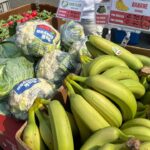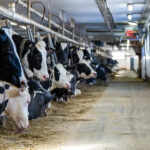The summer sun may signal vacation season for many, but for Surrey’s food banks, the warmer months bring a concerning spike in demand that tests their resources and resolve. As schools close their doors and family food budgets stretch thinner, local food assistance organizations are reporting a dramatic increase in service requests, creating what some volunteers describe as “the perfect storm of need.”
“Summer is traditionally our most challenging period,” explains Marilyn Johnston, operations director at the Surrey Food Bank. “When school meal programs pause for two months, families suddenly need to provide 10 additional meals per week per child. For households already walking a financial tightrope, this creates an impossible situation.”
Recent data from Surrey’s community services department reveals a 37% increase in food bank registrations compared to last summer, with nearly 2,800 families now depending on regular assistance. This surge comes amid rising grocery prices, which have climbed 12% since last year according to Statistics Canada figures, compounding difficulties for households already struggling with housing costs in the Lower Mainland.
The increased demand has forced several food banks to modify their distribution models. The Newton Community Food Hub has extended its operating hours to include evenings twice weekly, while the Guildford Family Resource Centre has implemented a new mobile pantry program targeting areas with limited transportation options.
“We’re seeing many first-time users who never imagined needing food assistance,” says Rajdeep Singh, volunteer coordinator at the Cloverdale Community Kitchen. “These are working families, seniors on fixed incomes, and students—people who simply can’t stretch their dollars any further as costs continue rising.”
Corporate and community partners have stepped up their support efforts. Save-On-Foods locations throughout Surrey have launched a “Round Up for Hunger” campaign, while the Surrey Board of Trade has mobilized member businesses to organize weekly food drives. These initiatives have helped maintain inventory levels, though specific items—particularly fresh produce, dairy, and protein sources—remain in critically short supply.
The situation highlights broader issues of food security and economic policy affecting communities across Canada. Surrey, with its diverse population including many new immigrants and refugees, faces particular challenges in ensuring nutritional support reaches all residents equitably.
“The misconception that food insecurity disappears in summer needs challenging,” notes Dr. Farah Ahmed, a food security researcher at Simon Fraser University. “Seasonal employment fluctuations, higher utility bills from air conditioning, and childcare costs actually create greater financial pressure during warmer months for vulnerable households.”
Local organizers emphasize that beyond food donations, volunteer time and monetary contributions provide crucial flexibility in addressing specific community needs. Several food banks have launched summer-specific fundraising campaigns with matching donation opportunities through August.
As temperatures rise and summer progresses, Surrey’s food assistance network continues adapting to meet growing demand. Their efforts underscore a fundamental question facing communities nationwide: in a country with abundant resources, how can we build systems that ensure no family faces the impossible choice between paying rent and putting food on the table?






















